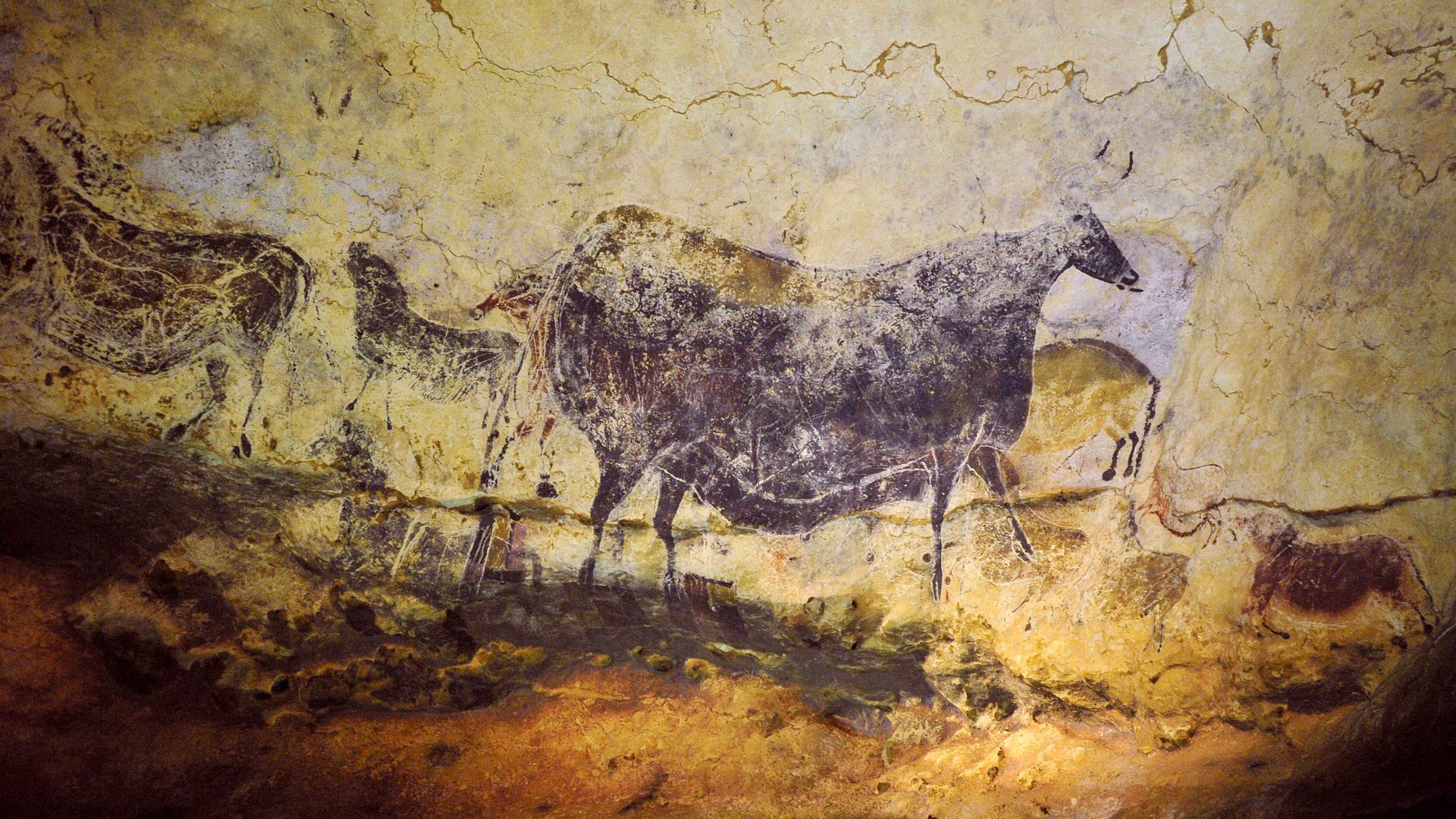Cave paintings such as those made 18,000-16,000 years ago at Lascaux in France and Altamira in Spain are wonderfully expressive but not terribly colourful. The artist’s palette during the Palaeolithic (which ended as the Ice Age began to thaw 11,700 years ago) was very limited: primarily red and yellowish ochres, charcoal black, and chalk and ground bones for white. Where in these works of cave art are the greens of vegetation or the blue of the sky?
Pigment use itself is considered one of the hallmarks of “behavioural modernity” in Homo sapiens, and there’s evidence of it going back at least 100,000 years, for example in body decoration and funeral practices. But why are the colours so sombre? The simple answer is that it is relatively easy to get hold of, say, reds, browns and blacks: you can dig them straight out of the earth as minerals such as ochres and manganese oxide.
Natural blues and greens are harder to come by. The famous blues of the Egyptians – blue frit for painting and the blue glaze of faience carvings – were a kind of copper-containing glass that had to be manufactured, which testifies to the skills in chemical technology that arose in Mesopotamia and dynastic Egypt. Cave artists had access to nothing like that.
The discovery of traces of a blue pigment – the copper carbonate mineral azurite – on a stone shaped into a shallow dish at a Palaeolithic site in Germany is therefore quite a find. The team of researchers – based at Aarhus University in Denmark, but including archaeologists and anthropologists from all over Europe – are convinced that the blue was put there intentionally, making it the earliest known use of a blue pigment in Europe. The site has been dated to around 14,000-11,700 years ago, when ice still covered much of Europe.
A bit of calibration is in order. Outside Europe, a blue pigment (as well as a green one) was reported eight years ago by Russian scientists on figurines called the Palaeolithic Venuses found in southern Siberia. These are far older: 19,000-23,000 years. Frankly, though, that report was a little weird: the chemical composition of the blue and green materials was a strange mix that didn’t correspond to any coloured mineral described elsewhere.
Suggested Reading


Trump, Kennedy and a gross debacle over autism
What’s more, green “earth” pigments (like the mineral celadonite) have been seen in rock art before, and at Lascaux and Altamira there’s even a murky violet made from a manganese mineral, though it’s hard to know if this was a deliberate colour choice.
Azurite, though, is a strong blue. It was used throughout the Middle Ages and the Renaissance as a cheaper substitute for costly ultramarine, made from the mineral lapis lazuli and imported from what is now Afghanistan. There were azurite deposits throughout Europe, in France, Hungary, Germany and Spain, and the Romans used it. It’s the blue of the sea in Titian’s Bacchus and Ariadne.
The German artefact is a concave stone that was initially thought to have served as an oil lamp, but is now suspected to have been used to grind or mix the pigment for paint-making. The blue doesn’t seem to be an impurity in the stone itself, but was put on the surface. Ochre has also been found at this site, near the Main River in the Mulheim region, fitting the idea that paint-making was going on there.
But if so, how come there’s no azurite blue in known cave paintings? Maybe that’s just not what they wanted it for. At the Neolithic site (6,700 years old) of Çatalhöyük in Anatolia, lumps of azurite have been found buried alongside several females, along with azurite-smeared bone objects thought to be pigment applicators. So it was probably used as a cosmetic.
That site is well known for its wall paintings, but none contain azurite blue. (The Çatalhöyük site also contains copper metal beads and traces of “slag” left over from smelting copper minerals to extract the metal: the beginnings, in other words, of the Bronze Age.)
So the team working at the German site suspect that this prehistoric blue was used “for activities that are invisible in the archaeological record”: body decoration or painting on wood or cloth. Perhaps particular colours were selected for specific purposes rather than painters simply grabbing all the colours they could get. That, after all, was what the ancient Greek painters did, often restricting themselves to a sombre four-colour palette of red, yellow, black and white even though others were available by then. More Franz Kline, you might say, than Matisse.




